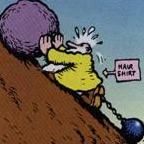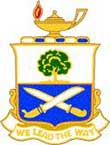juliet7bravo
Posts: 894
Joined: 5/30/2001
Status: offline

|
I can't speak for the accuracy as yet, these articles are no doubt heavily slanted, but I think it's safe to say they had at least "one factory". There was alot more going on in the puppet regimes than people generally think, on the industrial, resource, and local military fronts.
http://en.wikipedia.org/wiki/Mansyu
Manshukoku Hikoki Seizo KK (Manchurian Aircraft Company) was the aircraft factory in Manchukuo for Nakajima Hikoki KK (Nakajima Aircraft Company) of Japan. For short it was Mansyu. These installations were in Harbin, and began to manufacture air engines for the first national Manchu airplane, the Mansyu Hayabusa (Peregrine Falcon) Mark I, II, and III. It was part of the standard equipment of Manchukuo National Airways. The factory constructed under license, or on its own behalf, the following planes, from the 1930s to August 1945:
Transport Mansyu Hayabusa I,II,III (30 units)
Advanced trainer Mansyu Ki-79
Light fighter Nakajima Ki-27 "Nate" (1,379 units)
Advanced fighter Nakajima Ki-84 Hayate "Frank" (94 units)
Advanced cannon armed-dive bomber Mansyu Ki-71 "Edna" (some one prototype with permit of 1st Tachikawa Army Arsenal/Mitsubishi Company)
Advanced twin-fuselage high altitude Interceptor Mansyu Ki-98 (only certain prototypes along Nakajima company technical advisers) and other aircraft and prototypes.
Additionally it was a repair shop for Manchu and Japanese aircraft. Some types maintained for the Japanese and Manchukouan Air Forces
http://en.wikipedia.org/wiki/Showa_Steel_Works
Showa Steel Works began as a Japanese government-sponsored industrial combine called the Anshan Iron & Steel Works. It was built under the auspices of the South Manchurian Railway Company, in 1918. The city of Anshan, in Liaoning was chosen for its proximity to the Takushan iron ore deposits and rail works at Mukden. The company used low grade iron; in 1934 it mined 950,000 tonnes. In 1933, after a reorganization, it was renamed the Showa Steel Works.
Total production of processed iron in Manchuria in 1931-32 reached 1,000,000 tonnes, of which almost half was made by Showa Steel. In 1941, Showa Steel Works had a total capacity production of 1,750,000 tonnes of iron bars and 1,000,000 tonnes of processed steel. By 1942, Showa Steel Works total production capacity reached 3,600,000 tonnes, making it one of the major iron and steel centers in the world.
It was therefore of strategic importance in the Pacific War, and was subject to constant attack by B-29 bombers of the USAAF. Japanese Army detached the 1st Chutai (unit) of 104th Sentai (Squadron) of theImperial Japanese Army Air Service, to Anshan, with other air squadrons for industrial defense purposes. This unit was equipped with modern Nakajima Ki-84Ia (Manshu Type) Hayate "Frank" fighters, manufactured by Manchurian Aircraft Company under license from the Nakajima Aircraft Company.
http://en.wikipedia.org/wiki/Economy_of_Manchukuo
Industry
Prior to Japanese intervention, the sole industry was the Mukden Arsenal, property of Chang Hsueh-liang (son of Chang Tso-Lin), the Manchu Dictator. However, the Japanese established various types of factories and developed industries, mining products from Fushun Pehnshiu and Fusin, establishing locomotive and railway industries for manufacturing and repairing railway machinery, locomotives, etc. in Kantoshu (Kwantung), during the Manchukuo Empire period. During 1937 the Japanese Government with the Japanese Army commissioned the industrialist Yoshisuke Aikawa to organize and direct the Manchuria Industrial Development Company with a capital of 758,000,000 yen, in other words the "Manchoukuoan Zaibatsu Empire" after much difficulty and guided in centralizing the local mining and heavy industry. These government empires organized and implemented two five-year plans during the 1930s (reminiscent of Soviet Five-Year Plans too) with the aid of Naoki Hoshino. These five-year plans contributed to pushing the industrial development quickly into form. The heavy industry provided materials for construction, machinery, tools, tool machines, locomotives, small vessels, airplanes, automobiles and trucks, hand and heavy weapons and munitions for the Japanese and Manchu armies, candies and foods, cement, liquour and beer, bread and flour, synthetic gasoline and shared oils, tar, vegeteble and synthetic oils, electric devices, mining equipment, etc.
On the other hand, Manchoukou received from Japan certain quantities of scrap iron for iron and steel processing and at same time export unfinished products, coal (processed or raw), iron-derived steel products, etc. Other Manchuokuan products were rudimentary and modern farming equipment, industrial paint, boots, rubber articles, processed leather products, milk and cheese, carpets, glass, blankets, colours, dyes and inks, bricks, industrial paper and raw cellulose, fabrics, etc. These last areas are covered for local production of many tailors and hilanders, and overall modern textile factories with imported cotton. There were 500,000 spindles and fabric factories which annually produced 25,000 tonnes of cotton fabrics. Joining this industry was the dye and coloring industry.
Some Cyphers of Manchu Industrial Production(1932-35):
Coal production:15 Milions of Metrical tonnes of Coke Coal
Cement Production:one 10° Part of Japanese Cement production
Steel Production:450,000 metric tonnes
< Message edited by juliet7bravo -- 5/25/2006 10:20:24 PM >
|
 Printable Version
Printable Version

















 New Messages
New Messages No New Messages
No New Messages Hot Topic w/ New Messages
Hot Topic w/ New Messages Hot Topic w/o New Messages
Hot Topic w/o New Messages Locked w/ New Messages
Locked w/ New Messages Locked w/o New Messages
Locked w/o New Messages Post New Thread
Post New Thread